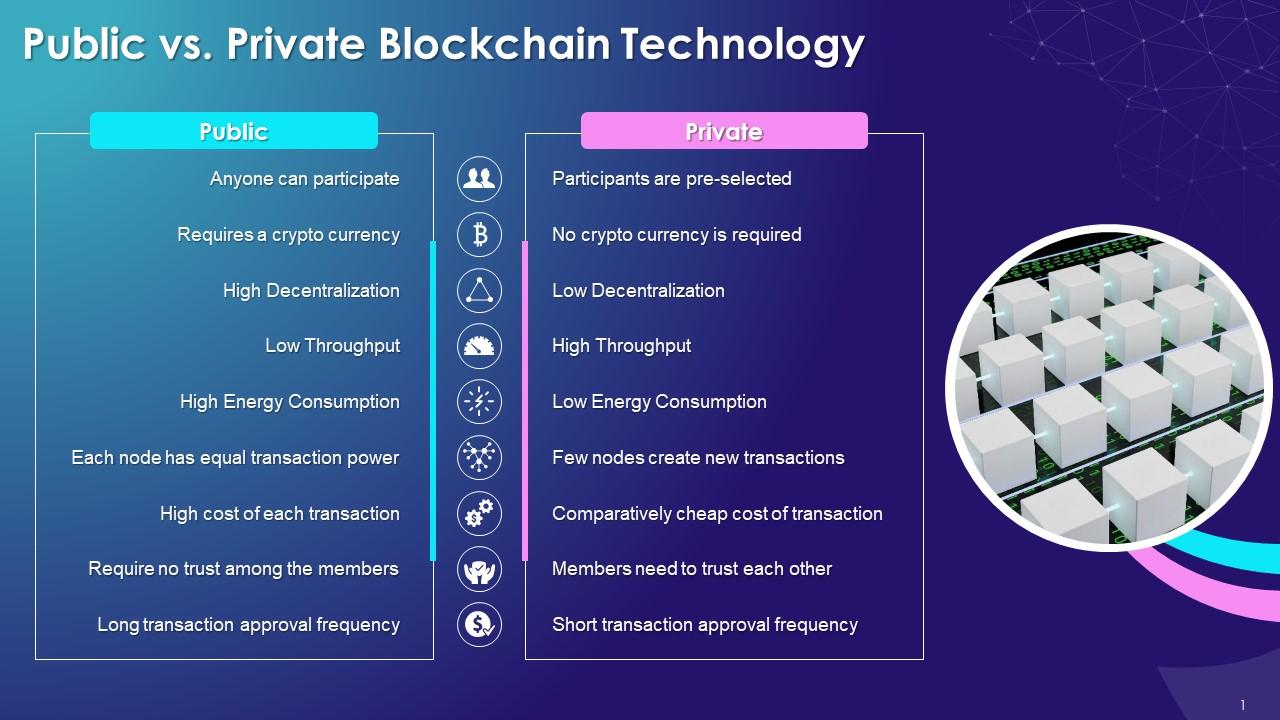Blockchain tech, at first made for currencies like Bitcoin, now goes far beyond money uses. At its core, blockchain is a spread-out digital book that records deals across many computers. This ensures each note is safe and can’t be changed, as no one person controls the whole chain. In today’s digital world, where security and being open are vital, the importance of blockchain tech has become huge.
Introduction to Blockchain Technology
A blockchain is a distributed digital book that records transactions in a safe and open way. Unlike normal books or databases run by central bosses, blockchain works on a distributed network of computers, making it naturally resistant to any one person’s control.
Every deal on a blockchain is checked by this network, often called nodes. When a deal starts, these nodes check it. Once confirmed, the deal goes into a new block. Each block has a unique hash sign, like a digital fingerprint. This hash links the new block to the one before it in the book, creating a chain.
This chain of blocks is kept across each node in the network, making sure every person has access to the same up-to-date book. This setup not only makes the blockchain open but also super resistant to tampering and fraud. The spread out nature ensures there is no single weak point, improving the strength and reliability of the system.
Types of Blockchains Explained
Blockchains are computer networks that allow people to make and check transactions safely. There are three main types: public, private, and consortium. Each one is made for different uses. Public blockchains like Bitcoin and Ethereum are open for anyone to join and use. This openness helps make them very safe and transparent, but they can be slow and lack privacy. Private blockchains are more restricted and usually run by one business. They prioritize confidentiality and control over transaction data. Only authorized members can access and verify transactions, making private blockchains secure and efficient for organizations.
Consortium blockchains are in the middle. A group of organizations operates them together, not just one. This shared control reduces centralization risks while maintaining the privacy and efficiency that collaborative businesses often need. Multiple stakeholders can jointly manage and verify transactions without an outside party. Consortium blockchains are common in industries where this shared control is important. The right blockchain type serves specific purposes based on the project’s or organization’s unique needs and challenges.
Public Blockchain
Public blockchains are open, spread out, and see-through networks. Anyone with a web link can join without needing permission. This openness allows many uses, like digital money like Bitcoin and Ethereum, and other decentralized apps.
Here are the key traits of public blockchains:
- Anyone can join as a user, node, miner, or coder. This allows people from all over to take part and use the tech.
- Control is spread out among many nodes, not just a few groups. No single person owns or controls the system. This prevents censorship and keeps the network going even if parts fail.
- All transactions are visible to network members. This openness lets people check activities, building trust.
- Data recorded is very complex to change. Cryptography links blocks in a chain, preventing tampering and keeping data intact.
Public blockchains let common folks take part freely. We believe this open access empowers people globally with secure, transparent technology controlled by its users, not corporations or governments alone. The ability to join without approval is quite revolutionary!
- Security: Public blockchains use methods like Proof of Work (PoW) and Proof of Stake (PoS) that need people to contribute resources (computer power or stake) to keep and secure the network. The network’s spread out makes it strong against attacks. To change most copies at the same time would require a ton of energy and computer power.
- Trustless Environment: In public blockchains, trust is in the tech and rules rather than anyone. Using codes and agreement models, means users don’t need to trust each other but can instead trust the checking built into the blockchain.
- Interoperability and Innovation: With no blocks to entry, public blockchains encourage new tech growth. Developers can build and release decentralized apps that work on these public networks, getting security and network effects from established blockchains.
- Tokenization: Public blockchains often allow making new digital currencies and tokens, letting assets be tokenized, which can be traded or used within different groups. This has led to ICOs (Initial Coin Offerings), providing a new way to raise money and invest.
Challenges and Limitations:
- Not much big. Bitcoin and Ethereum can only do a few works each second. Too many people want to use blocks at the same time. Makes it slow and costs more money.
- It needs lots of energy. The way blocks work needs lots of power. This is bad for the land.
- No privacy. All block works are seen by everyone. Some works need to be secret.
- Not many rules. Blocks work all over the world. But each place has its own rules about blocks. This makes it hard.
- Breaks can happen. The smart papers that run blocks can sometimes break. People can lose money if this happens.
Even with these problems, blocks are still good. They are strong, clear, and let everyone use them. People like blocks because they can change how money, papers, and trust work.
Private Blockchain
Private blockchains are digital records made for small groups. They are used by one group or many groups who want control over how they work. Unlike open blockchains, where anyone can join, private blockchains only let in a few approved people. This setup is great for businesses that need privacy blockchains, speed, and control over their blockchain actions.
Private blockchain examples like Hyperledger Fabric and R3’s Corda illustrate the adaptability and efficiency of this technology in secure, permissioned environments. Hyperledger Fabric excels in various sectors by offering customizable solutions that enhance operational efficiency, while Corda is tailored for the financial industry, ensuring transactions are secure and compliant with stringent regulations.
Characteristics of Private Blockchains:
- Limited Access: Only approved people or groups can join a private blockchain. This could be employees at a company, certain companies in a group, or trusted third parties.
- More Central Control: While still using decentralized tech, private blockchains have more central control than open ones. One group or a few groups have significant control over the network, including changing rules, editing transactions, and adding new nodes.
- Faster: Private blockchains can do transactions quicker than open ones because there are fewer nodes. This speed is key for businesses that need fast transactions.
- More Privacy: Since transactions are not public, private blockchains have more privacy. This is essential for businesses with sensitive data or in regulated industries.
Private blockchains offer many good things:
- They work really fast. There are less people using private blockchains. So data moves quickly. Private blockchains are way faster than public blockchains.
- Private blockchains are safer and controlled. Companies run them. Companies can fix problems fast. They control the data too. Companies make sure data follows their rules.
- Private blockchains are custom. Companies design them for their needs. The blockchains have special features to help companies.
- Private blockchains cost less money. There are not many people mining on them. Mining takes a lot of power and money on public blockchains.
Challenges and Limitations:
- Central control can lead to issues if people in charge act badly or make mistakes. A small group having too much power may also cause problems.
- Private blockchains often have trouble working with other blockchain systems, which limits how much they can connect with larger networks or use technologies made for other platforms.
- While private blockchains are secure from outside threats, their security depends on a small group of trusted nodes. This can make them more open to inside security breaches than public blockchains with many independent validators.
- Smaller private blockchain network can be less secure against certain attacks like the 51% attack, compared to large public blockchains with more nodes validating transactions.
Private blockchains offer a balanced approach using blockchain technology – keeping the upsides of decentralization while giving enterprises the privacy and efficiency they need. Despite limits, they benefit organizations wanting blockchain for internal uses where public blockchains don’t fit operational needs.
You might also like
business-intelligence
How to Remote Access IoT Devices
In the last twenty years, the Internet of Things (IoT) landscape has grown immensely. This marks significant strides in how computers and devices help our daily tasks and complex applications. IoT consists of a vast network of sensors, devices, and systems. They’ve become crucial to our lives, letting us remotely connect with many devices. This […]

Consortium Blockchain
Consortium blockchains sit between public and private blockchains. Many organizations work together on these blockchains. They let groups interact safely while keeping data control. This kind of blockchain is good when many people need to work together digitally but keep some info private.
Consortium blockchain examples such as Energy Web Foundation and IBM Food Trust highlight the collaborative benefits of this technology in specific industries. Energy Web Foundation brings together multiple energy sector stakeholders to enhance grid management through decentralized solutions, while IBM Food Trust leverages blockchain to improve food traceability and safety across various players in the supply chain.
Traits of Consortium Blockchains:
- Limited Access: Only approved nodes can join a consortium blockchain. These nodes are usually organizations with shared goals. Each group runs a node to keep the network secure and fast.
- Shared Control: No single group controls a consortium blockchain. Approved nodes govern together. This prevents one group from taking over and makes the network more secure and trustworthy.
- Speed and Scalability: Consortium blockchains can process more transactions faster than public blockchains. They use simpler rules that require fewer nodes to validate each transaction.
- Consortium blockchains offer better privacy than public blockchains. Only approved members can view shared data. This privacy is key for sectors with sensitive info.
Blockchains shared by groups have benefits:
- The cost is less for many groups than for one alone. The costs to run go around all groups, so each one pays a small part.
- Safety is better than just one group. With many groups in charge, no one group can do bad stuff. This is safer than one group in charge but still safer than an open blockchain.
- Rules can go right in, so trades follow laws. Groups pick rules for their work, and the blockchain makes sure all trades follow those rules.
- Groups work well together. These blockchains are made to let groups trade and swap data easily, which is needed when groups work together a lot.
Challenges and Limitations:
- Complex Rules: Setting up and following rules that everyone agrees with can be hard. Disagreements about changing the rules, updates, or adding new members can cause delays and problems.
- Not Fully Spread Out: While more spread out than private blockchains, consortium blockchains are still less spread out than public blockchains. This partial spreading out can sometimes lead to arguments or unfair power among the members.
- Growth Worries: Although better at growing than public blockchains, the growth of consortium blockchains can still be limited by the need to have agreement among more nodes than in private blockchains.
- Risk of Scheming: Since a few groups control the network, there is a potential risk of scheming among them, which could damage the trust and safety of the network.
Consortium blockchains offer a practical way for industries that need both teamwork and control. By using the strengths of both public and private blockchains, they provide an effective platform for many organizations to work together safely and efficiently. Despite the challenges with rules and growth, the benefits of improved safety, cost savings, and following regulations make consortium blockchains a compelling choice for many business uses.
Private Blockchain Vs. Public Blockchain Vs. Consortium Blockchain
Understanding the different types of blockchains is important. Private blockchains provide a private space with high privacy and fast speeds. This makes them good for groups that want privacy. On the other hand, public blockchains are open and see-through. They work well for things like cryptocurrencies, where many people can access them.
Consortium blockchains are in the middle. A few groups share control over them. This allows some privacy while still working together. Each type serves different needs. The right one depends on whether you need access, governance, security, or big sizes. Here is a table showing key things and examples about the different blockchains.
| Feature | Private Blockchain | Public Blockchain | Consortium Blockchain |
| Accessibility | Restricted to specific members with permissions | Open to anyone with Internet access | Limited to a consortium of pre-selected organizations |
| Governance | Centralized within one organization or a select few | Decentralized, no central authority | Partially decentralized; governed by a group of entities |
| Typical Uses | Internal business processes, data management | Cryptocurrencies, decentralized applications | Collaborative operations across multiple businesses |
| Consensus Process | Can be simplified as fewer nodes are involved | Requires more complex consensus mechanisms like PoW/PoS | Typically less complex than public but more than private |
| Transaction Speed | High due to fewer nodes and less complex consensus | Lower due to the large number of nodes and heavy security | Faster than public, but varies depending on the network setup |
| Decentralization | Low, as control is often concentrated | High, fully decentralized | Moderate, with shared control among consortium members |
| Privacy | High, as access is restricted and controlled | Low, as all transactions are public | Moderate, better than public but less than private |
| Security | High internal security, dependent on trust among nodes | Extremely high due to decentralized nature | High, relies on trust among consortium members |
| Cost | Lower operational costs due to fewer participants | High due to energy and computational costs | Costs are shared among participants, reducing individual burden |
| Regulatory Compliance | Easier to achieve as the network is closed | Challenging due to its public and global nature | Designed with compliance in mind, adaptable to regulations |
| Interoperability | Generally low, operates within a closed ecosystem | High, designed to work across various networks | Moderate, mainly within the consortium but can be extended |
| Scalability | More scalable within its closed environment | Faces scalability issues due to its size and consensus complexity | More scalable than public but depends on the consortium size |
The table gives a clear view of how each blockchain type works. It shows the good points and bad points that make them right for different uses and places. Each type is good for certain needs. They work well for things that need privacy, speed, low cost, or control.
Conclusion
Looking at different blockchains shows a world where tech changes to meet modern app needs. Blockchains have big pros, from making businesses run better to keeping data safe. As Pragmatic DLT keeps making new things in this space, knowing the ins and outs of private blockchain networks and public ones will be key for anyone, who wants to use blockchain tech in their work.
In the end, whether you pick a private, public, or group blockchain, each has special benefits and challenges. It’s about choosing the right tool for the right job while truly grasping its core traits and how it could impact your business.






